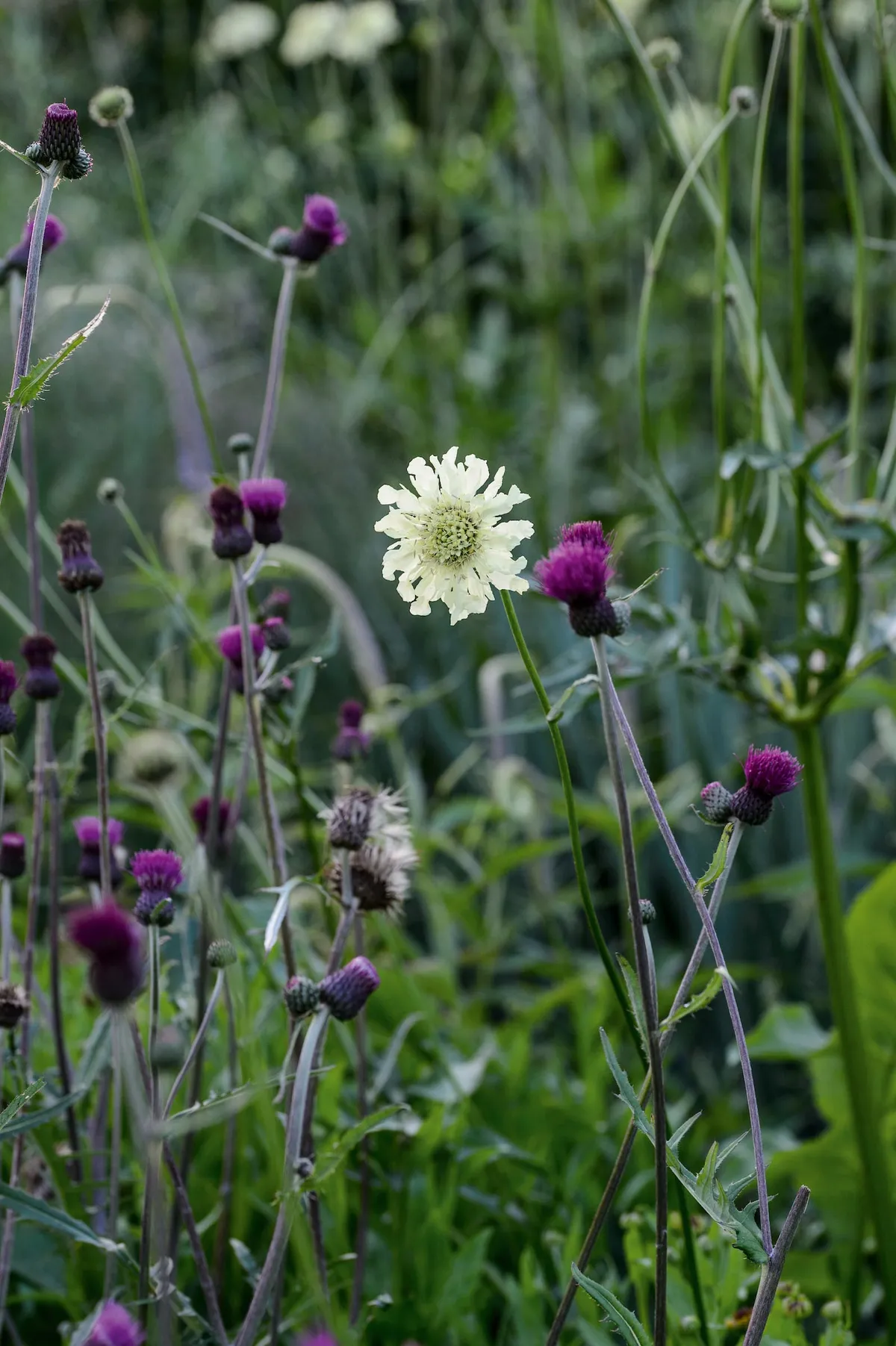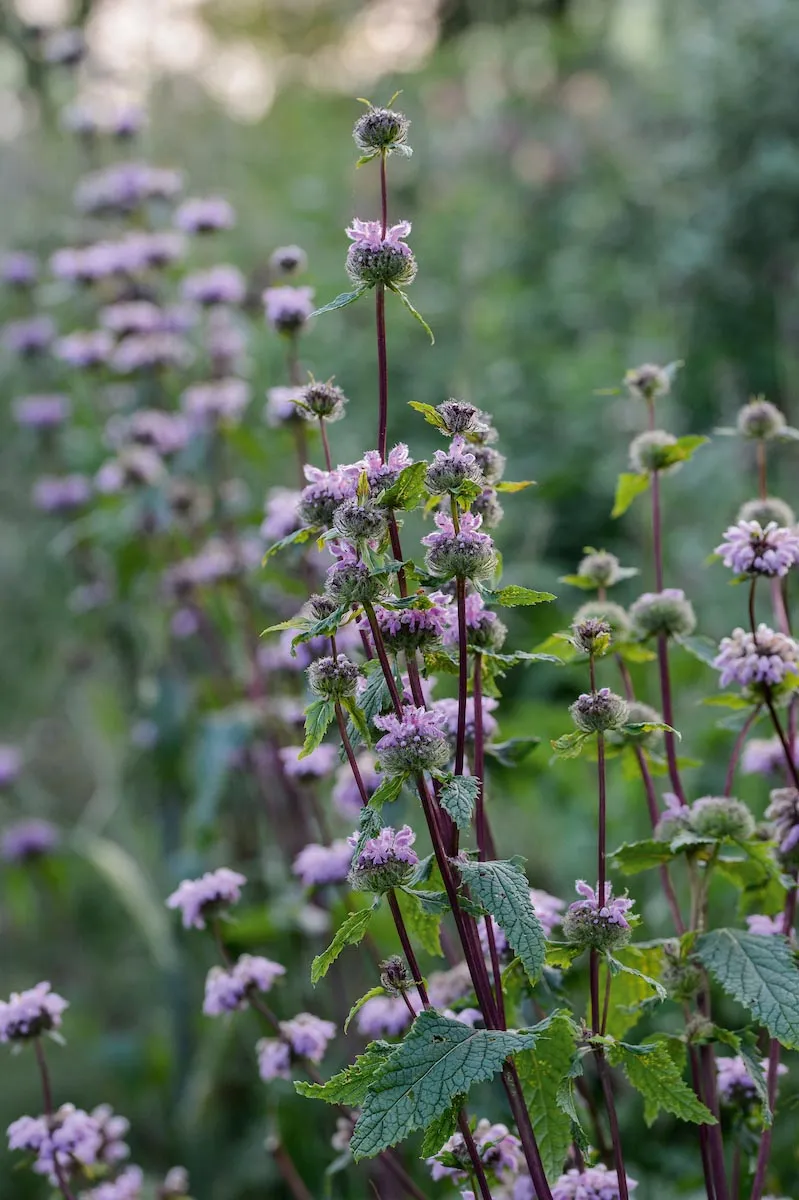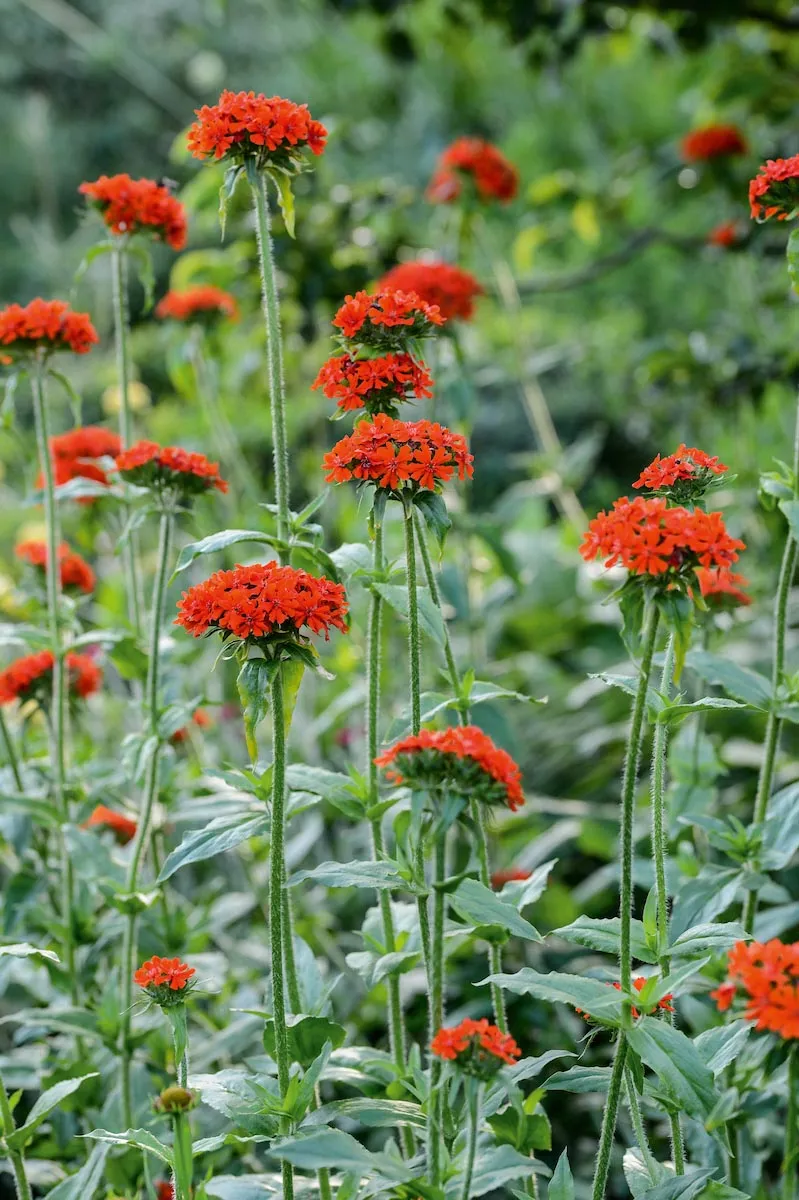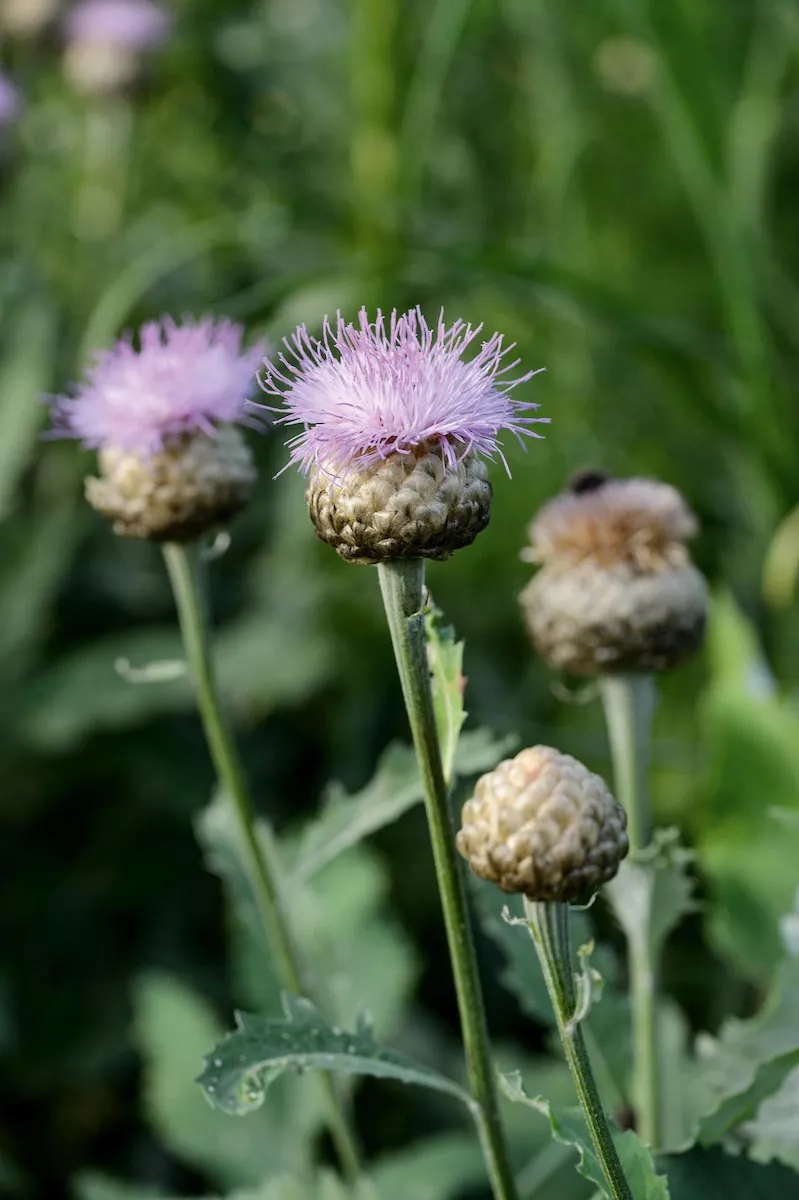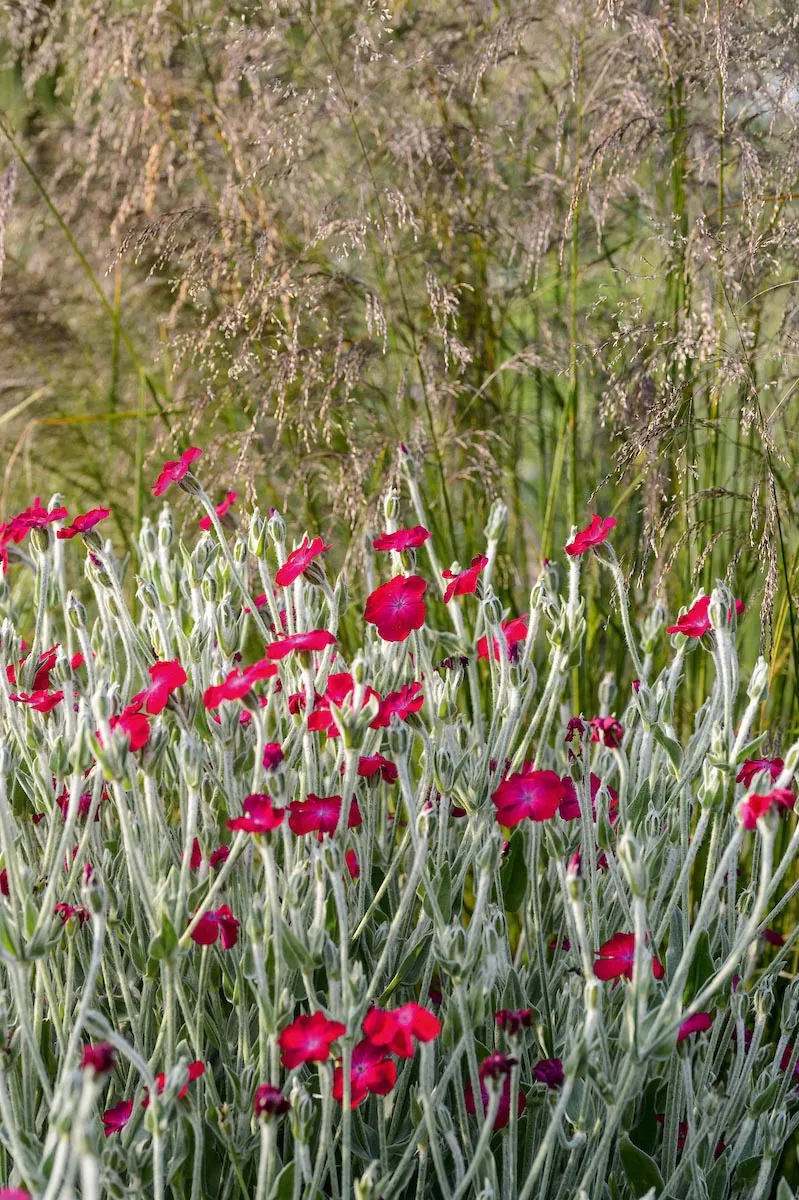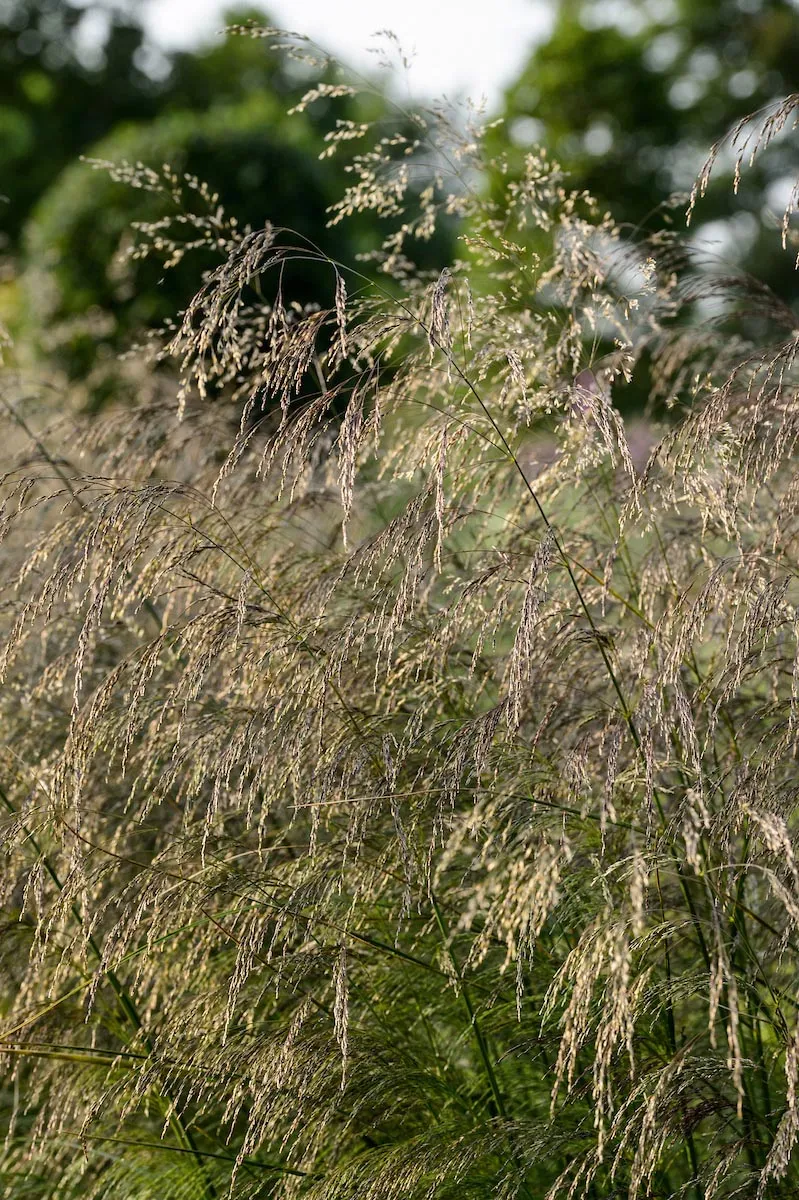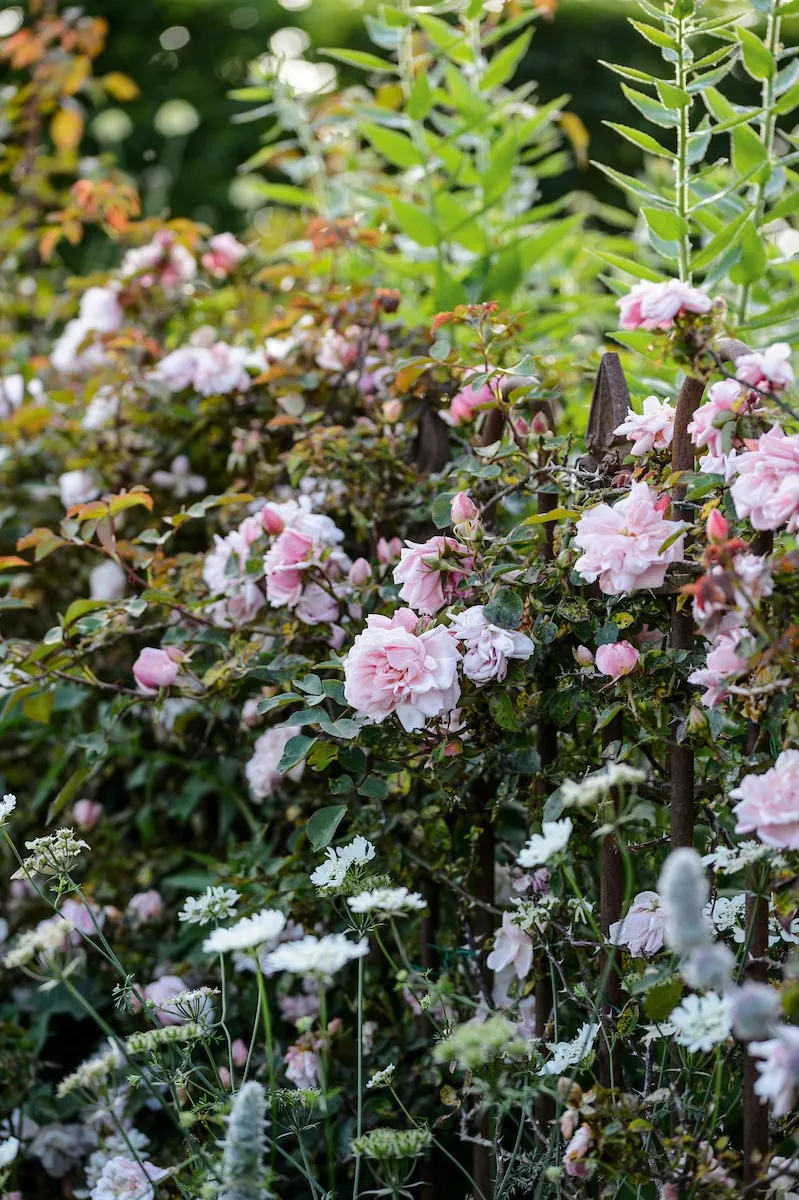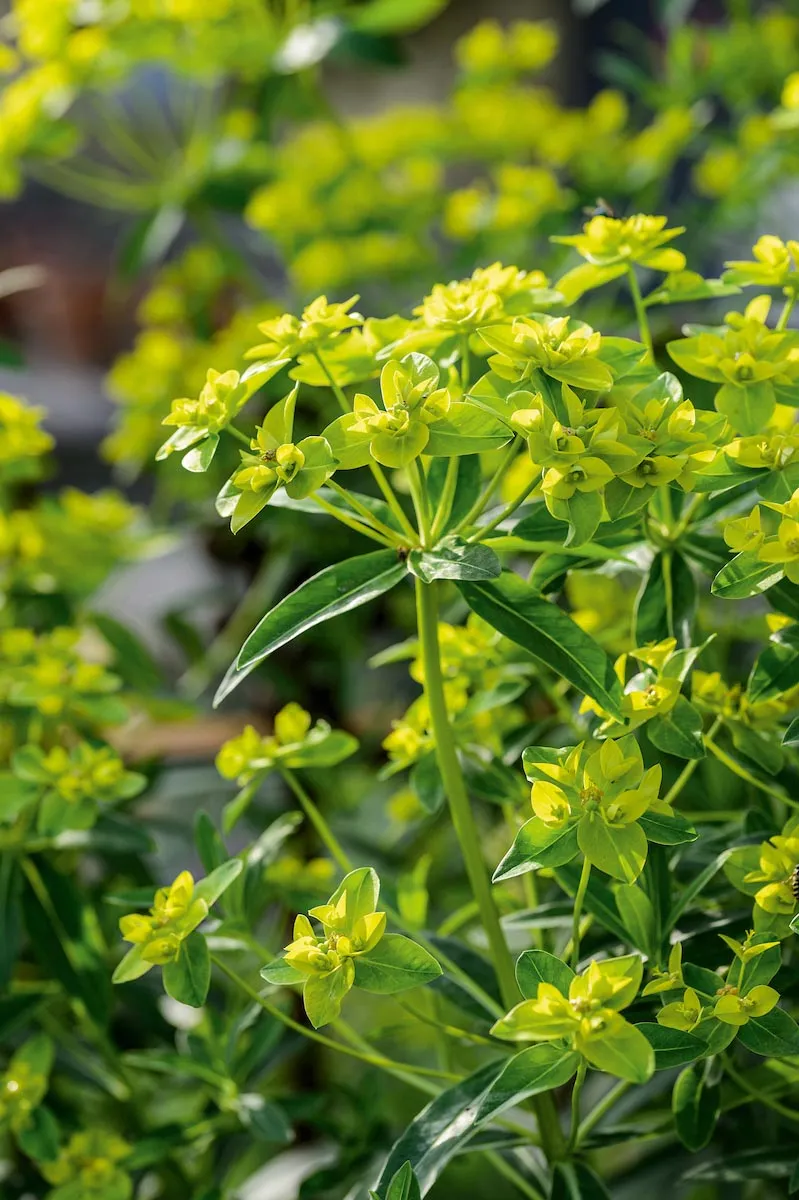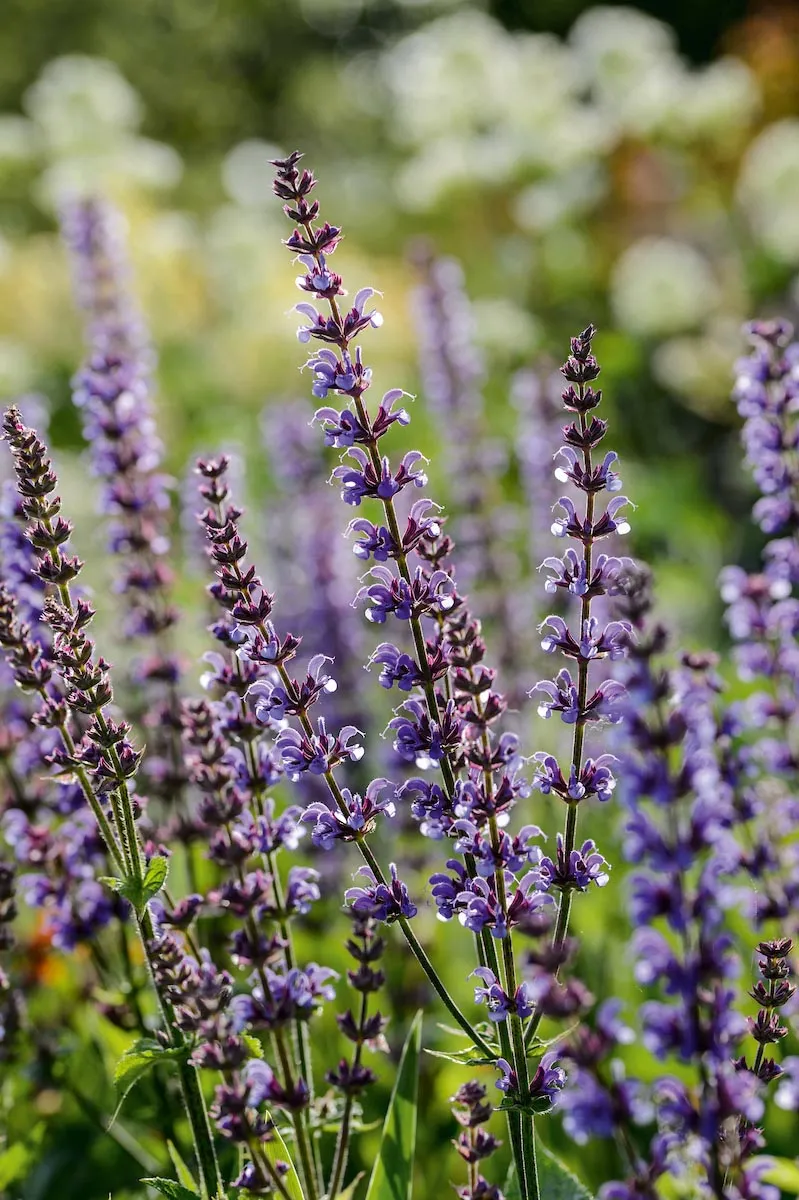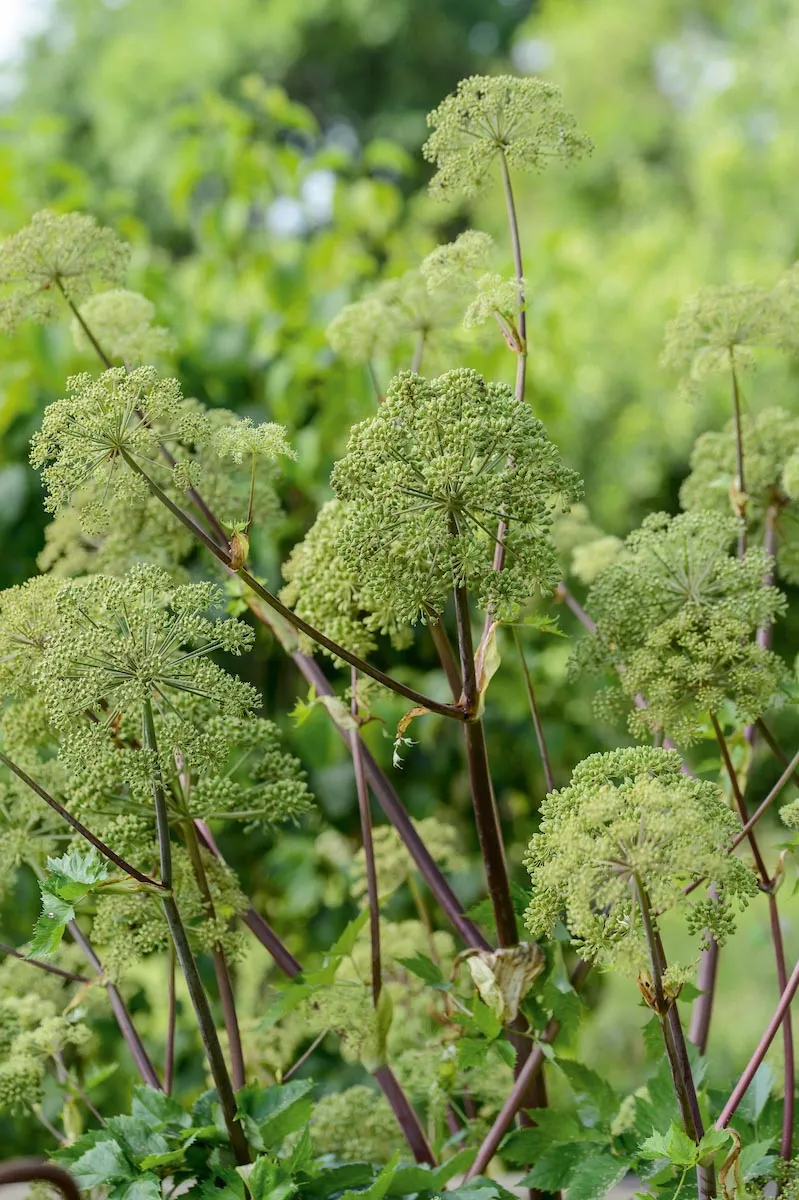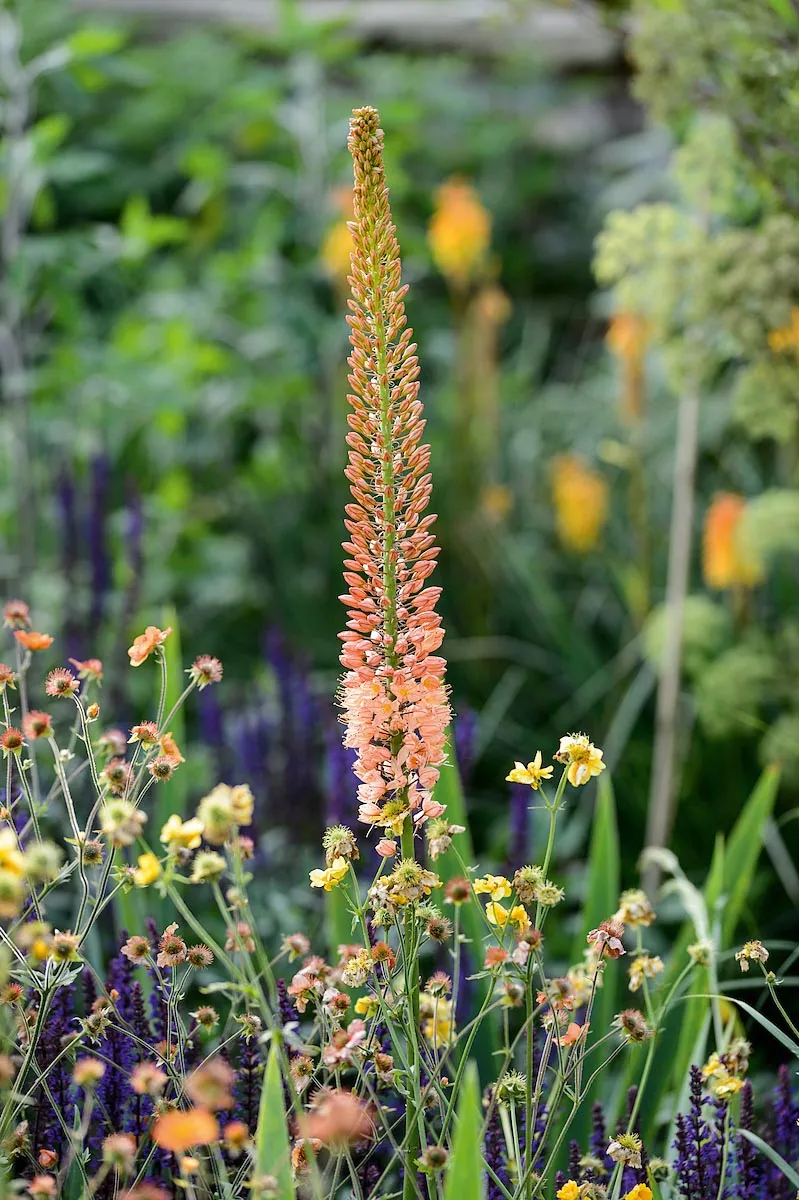Leaving the huge, hot sky on the edge of the Somerset Levels heading west, the road turns east and into the folds of the Blackdown Hills as you cross into Devon. Here the ferny lanes are in deep shadow, the shade of imperturbable oak trees. Mercurial rivulets hug the edges of the dark, which suddenly lights up in the break created by a welcoming gate and a farmhouse, its formal façade basking in the heat, blushing behind a riot of roses and rather shy, grey sash windows. This is home to Alasdair and Tor Cameron and their three children, and although Alasdair and Tor have done so much in the eight years since they moved here, nothing they have done jars with the fundamentals of Devonshire fields and farming. Sheep graze behind gates and fences that are new but do not feel it; a ruddy, red local pea gravel runs up and round the rescued cobbles and is laid as a thin dusting over compacted hoggin for firmness under foot and wheel. These are the details that make a garden and house feel properly grounded in its landscape. They make it smell and feel right, as though it has all just ‘happened’ – the hardest thing to achieve.
Alasdair is the best kind of energetic plantaholic; a garden designer with a successful business, he has fearlessly drained and taken in hand the claggy field he found behind the house. He then dug up and planted, not just a garden, but huge swathes of waving fronds and inflorescence, rivers of colour intersected by curling byways. The scale of things is large enough for his daughter to trot a pony on a path between torrents of lush herbaceous planting and a camomile lawn so green it might be under water. Umbellifers abound and they have done something I have always meant to do, planted spare parsnips from the vegetable garden to grow into metre-high perennials with flat-headed umbels. The whole of the sweeping border is lively with leaf shape, a dancing graph of spikey heights intended to be left over winter. I have a theory that prairie planting cannot be made to work in this part of the South West, where the lack of frost and high autumn rainfall merely turn a blackened border to a slush, dahlias turning to jelly. But here the standing seedheads bring as much joy to Alasdair and Tor as the high summer abundance.
Read more about the garden below.
Alasdair Cameron's garden in brief
Name Silver Street Farm. What Private garden. Where Devon. Soil Clay. Size Three acres. Climate Temperate. Hardiness zone USDA 9.
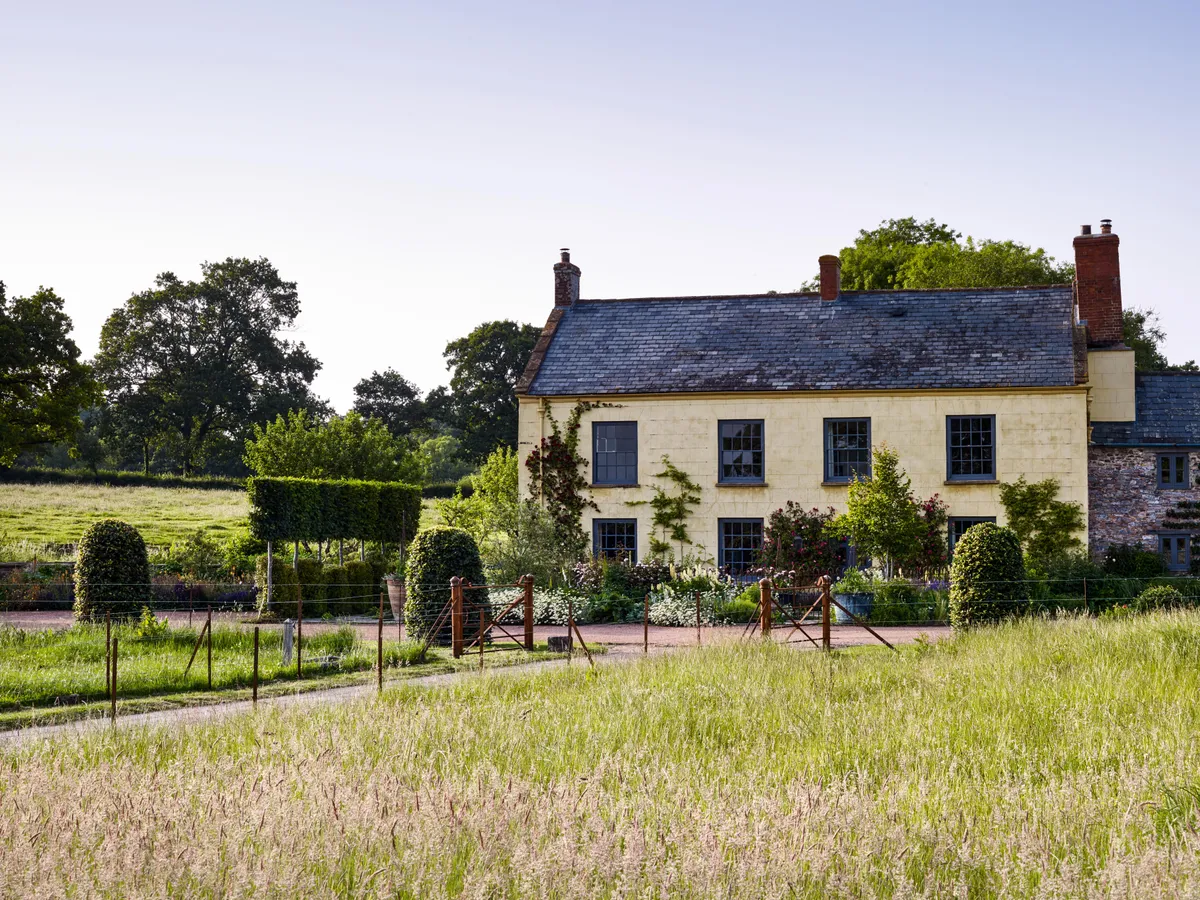
Neatly clipped beehive-shaped beech topiaries line the approach to Alasdair Cameron’s former Devon farmhouse around which borders and pots are overflowing with cottage planting, including Anthemis tinctoria ‘EC Buxton’, Artemisia ‘Powis Castle’, Verbascum chaixii ‘Album’, Rosa ‘Albertine’ and Rosa banksiae ‘Lutea’.
You can tell the makers of this garden are informed, environmentally aware, and professional
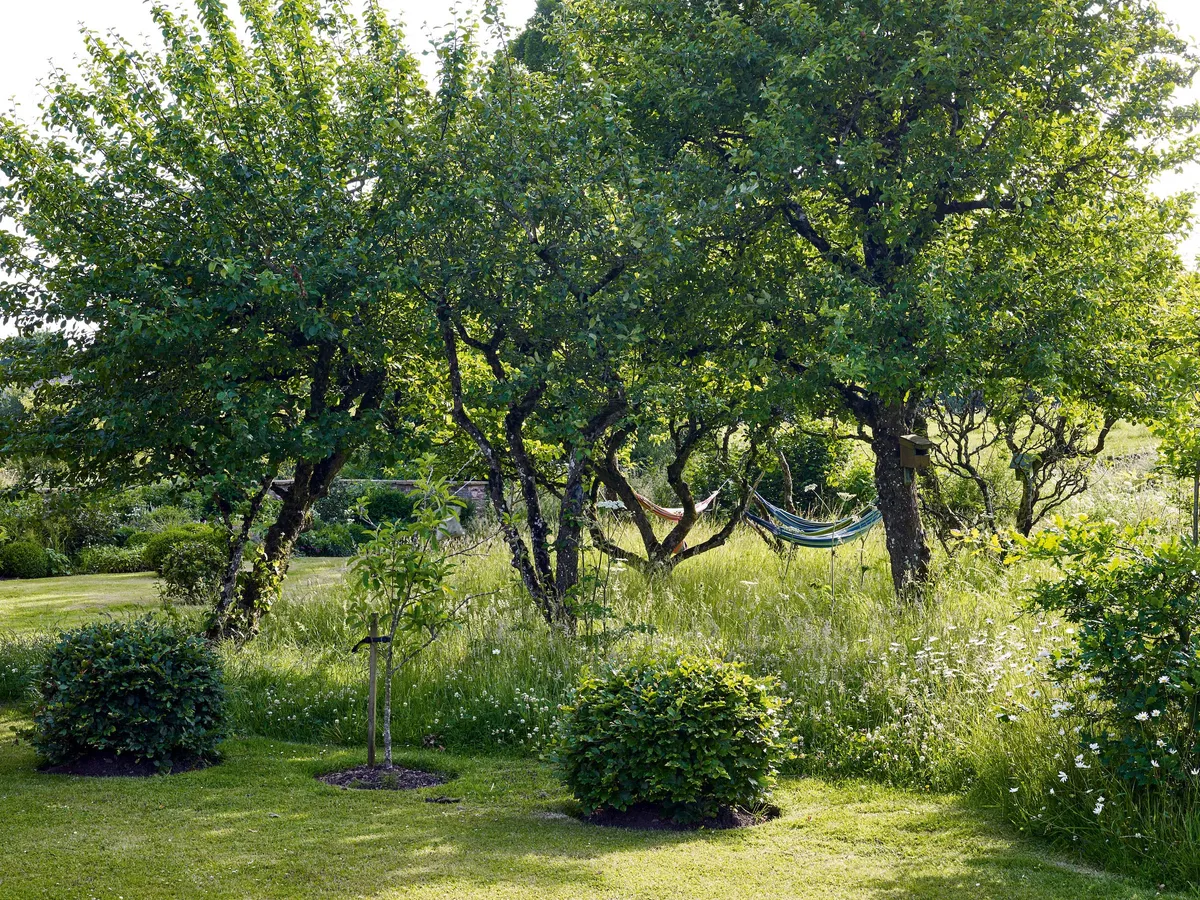
Alasdair wanted to keep what he could of the old farm orchard using spring bulbs and long grass, which is cut in August. When adding form with some clipped buns of beech he was keen that it should still be random and informal. The scented garden can be seen in the background nestled before a wall.

Tall orange spires of Kniphofia ‘Tawny King’ and Eremurus ‘Romance’ mixed with the zingy orange of Geum ‘Prinses Juliana’ create a fabulous contrast to the blues of Salvia nemorosa ‘Caradonna’ and Salvia nemorosa ‘Ostfriesland’ cooled by the white of Scabiosa caucasica ‘Perfecta Alba’.
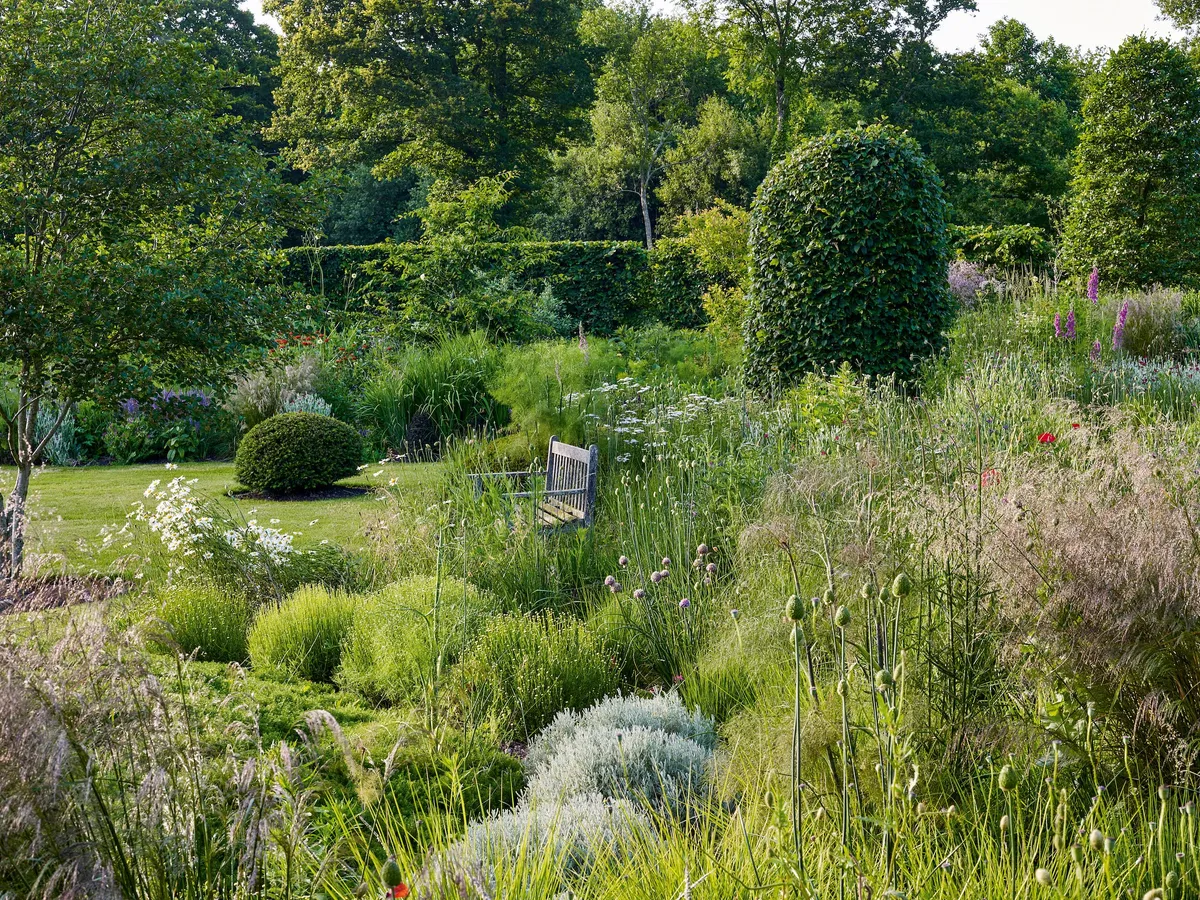
A mix of tall planting, including Molinia caerulea subsp. arundinacea ‘Karl Foerster’ and Allium sphaerocephalon (both
of which look fantastic in winter) surround a lichen-covered bench. Clipped beech and yew hold everything loosely together throughout the year.
Nothing Alasdair and Tor have done jars with the fundamentals of Devonshire fields and farming
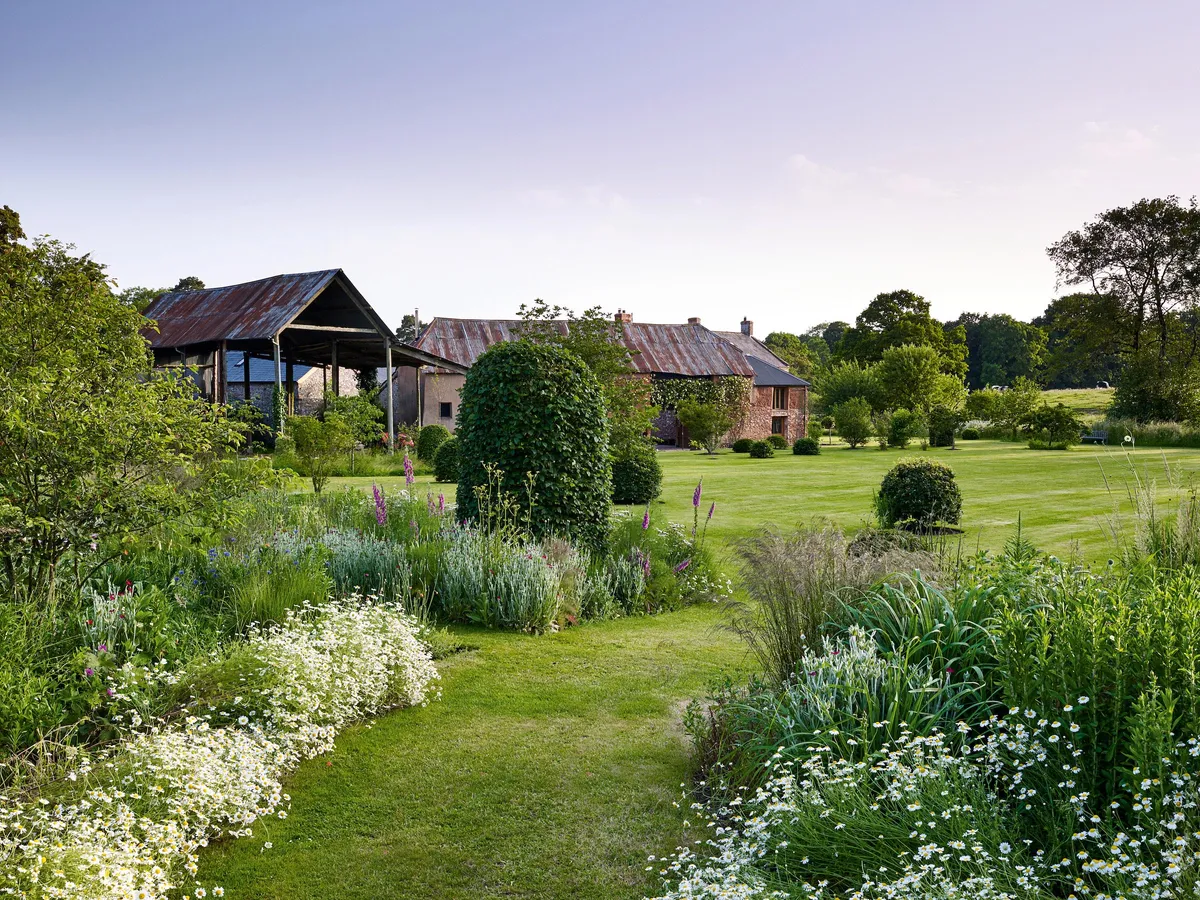
Informal topiary gives winter structure and punctuation to the big river border that flows round the whole lawn and back to the house and tottering barns, without being too ‘designer’. This is helped by swathes of grasses with Lychnis coronaria, wild anthemis daisies, lovage and foxgloves.
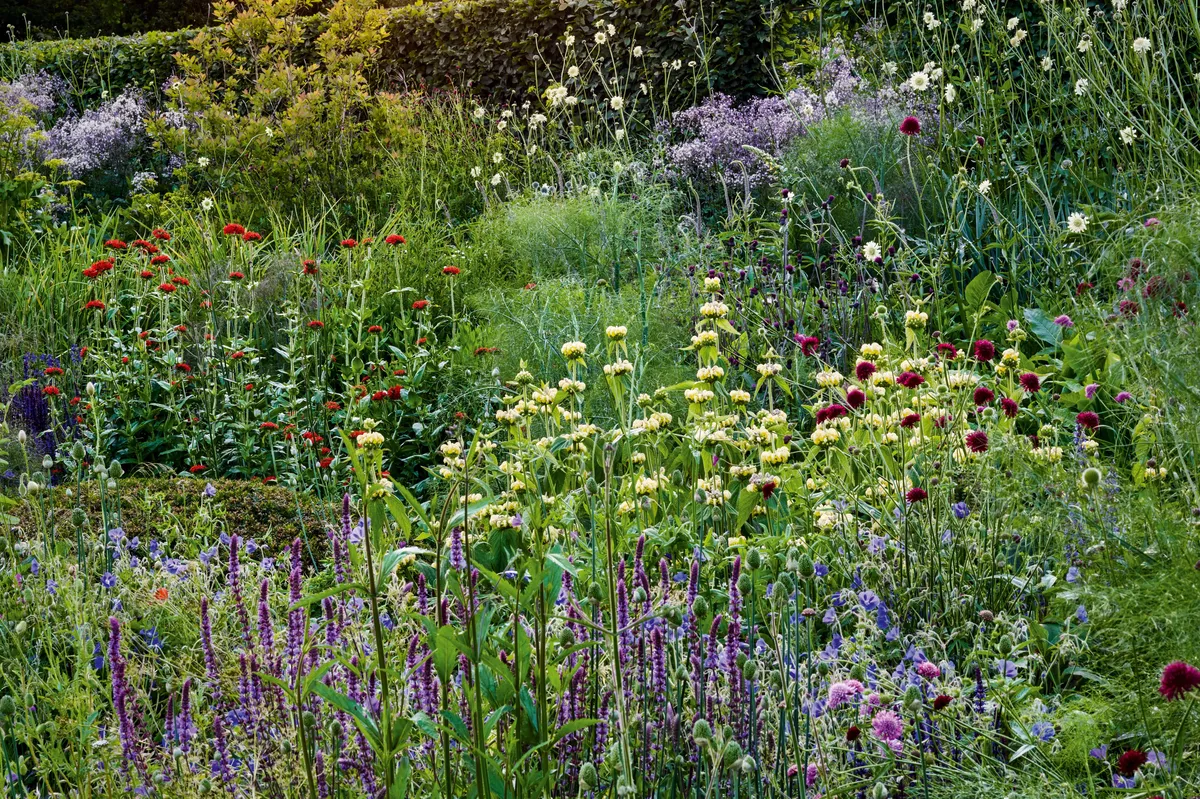
A richly coloured mix of planting, including Salvia nemorosa ‘Caradonna’, Salvia nemorosa ‘Ostfriesland’, Lychnis chalcedonica, Verbena hastata and Phlomis russeliana, engulf a dome of yew that will add structure to the border throughout winter. The clipped beech hedge adds more structure softened by taller plants, including Thalictrum ‘Black Stockings’.
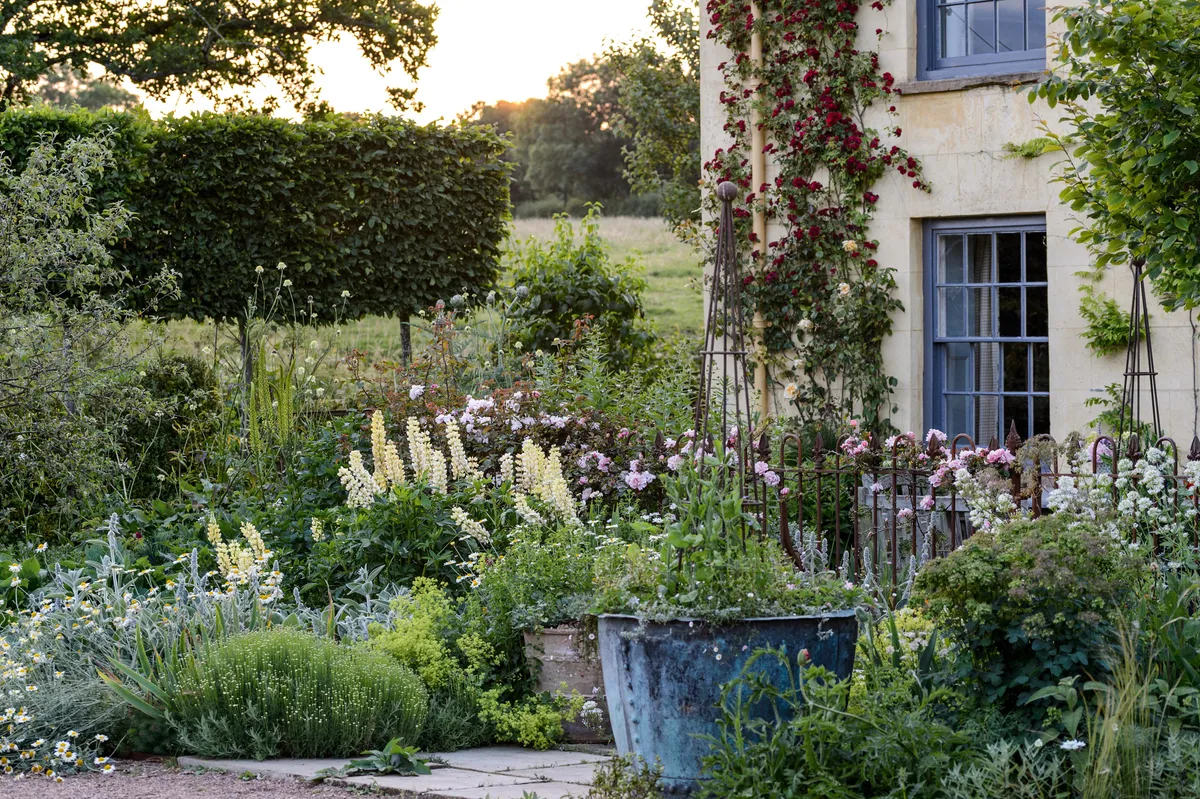
Lupins ‘Cashmere Cream’ and ‘Chandelier’ echo the limewash on the house, up which clamber roses ‘Chevvy Chase’ and ‘Climbing Lady Hillingdon’. Coppery Rosa ‘Albertine’ blends over the rusty railings and in front of these, large tubs of pelargoniums and sweet peas waft scent on to the terrace.
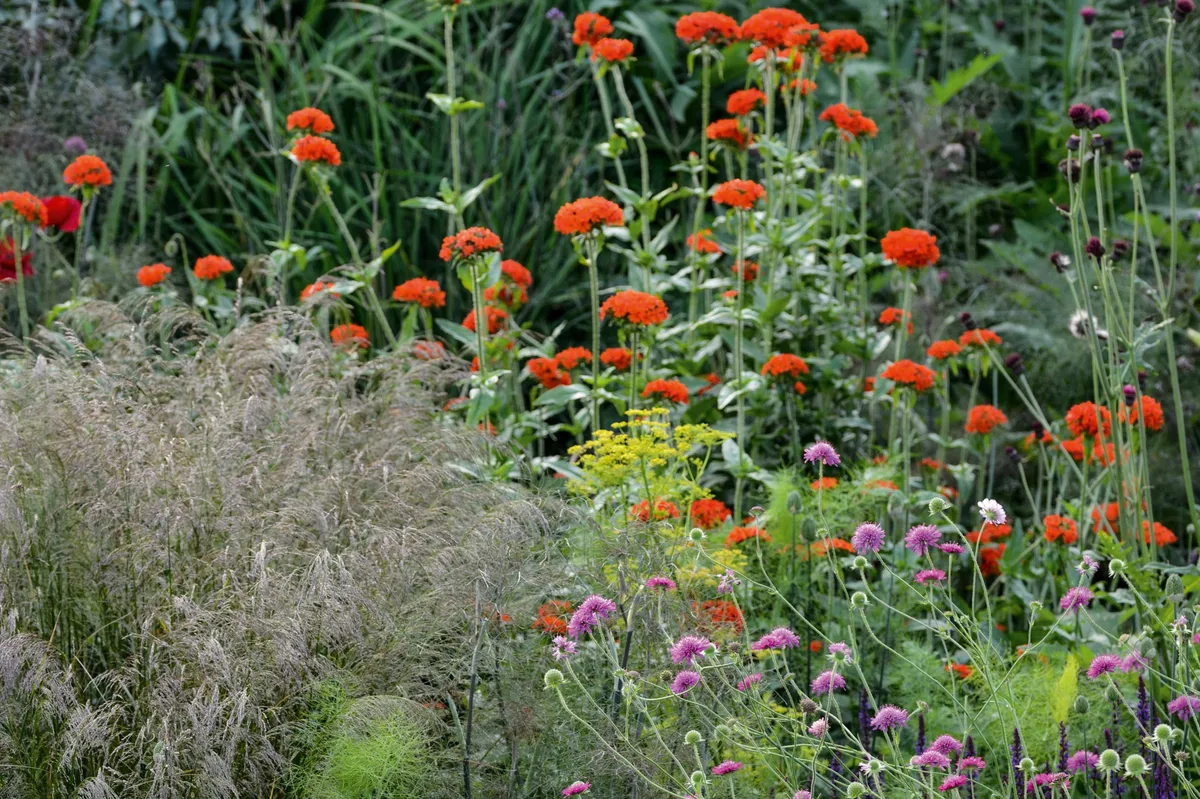
Lychnis chalcedonica offers another bold colour choice with its rich red flowers, here combined with the airy tussock grass Deschampsia cespitosa, which Alasdair says is amazing in winter, the pinkish red Cirsium rivulare ‘Atropurpureum’ hiding with the Knautia macedonica, self-seeded fennel and Geranium ‘Brookside’ filling the front.
12 key plants from Alasdair Cameron's garden
Find out more about Alasdair’s work at camerongardens.co.uk

